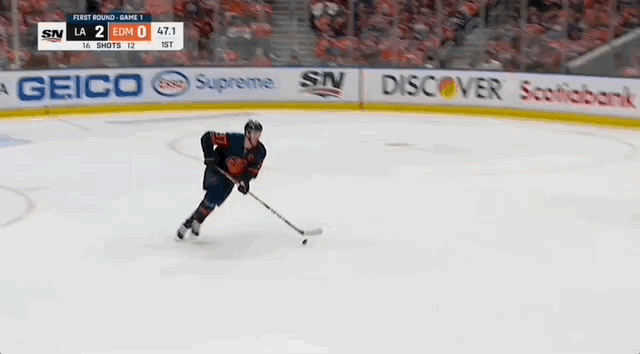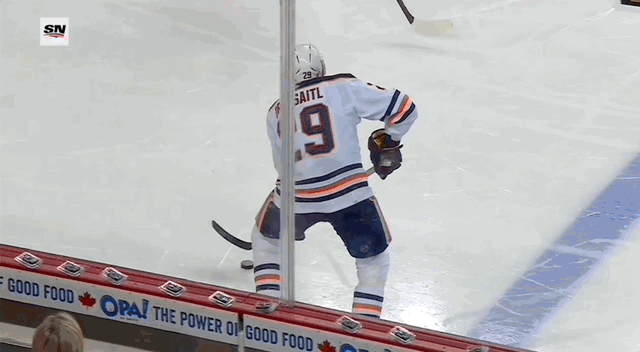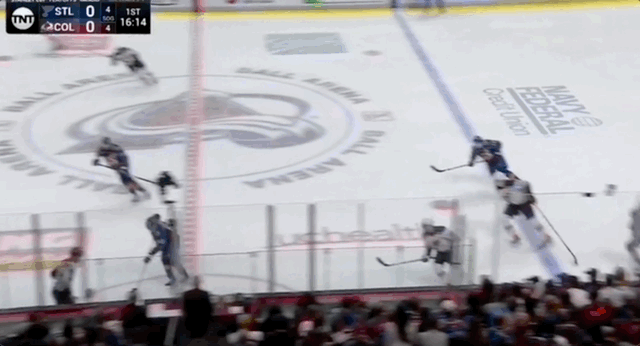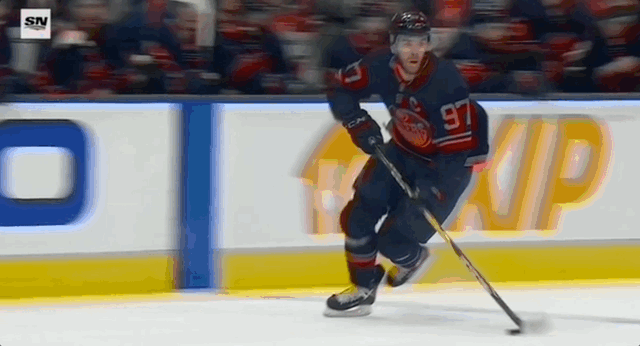
Whether you saw the Western Conference Final featuring a matchup of the Colorado Avalanche and Edmonton Oilers probably depended on how much faith you had in each team playing to their potential.
The Avalanche are a stacked team but have learned that being the best-constructed squad doesn’t mean they’ll go all the way. The Oilers, on the other hand, have some roster flaws which may have planted some seeds of doubt heading into the post-season — especially if their path included a Round 2 battle with the Calgary Flames.
But here these teams are, the only two left in the West, ready for a showdown. And that’s an absolute gift to the hockey world because it means there will be a matchup of two absolute superstars in Connor McDavid and Nathan MacKinnon.
It’s a McMatchup for the ages between these two elite talents who have shined so far in the playoffs, as each skater reaches a Conference Final for the first time.
Both MacKinnon and McDavid have risen to the occasion this post-season, taking control of games to push their teams forward. After tallying 88 points in 65 games in the regular season (at a team-leading rate of 3.9 points per 60), Colorado’s centre has netted another 13 points in 10 playoff games (at a pace of 3.7 points per 60).
Meanwhile, McDavid earned 44 goals and a league-leading 123 points in 80 games scoring at a rate of 4.2 points per 60 which is the second-best of his career. His next-level playoff performance lands him at 26 points in 12 games at the second-best rate in the league (to Leon Draisaitl) of 5.82 per 60.
So far, the Oilers have scored 52 goals in all situations in the playoffs, and McDavid has a point on 52 per cent of those goals. With McDavid on the ice, Edmonton has outscored opponents 38-11, and McDavid has earned a point on 68 per cent of those goals. All but two of his points have been primary, which means he’s had a direct impact on his team’s scores at least 63 per cent of the time.
The ice has been very slanted while MacKinnon has been deployed as well. With their leading centre on the ice, Colorado has outscored opponents 20-6, and he’s earned a point on 65 per cent of those tallies.
In this upcoming matchup, these two should once again be forces. Each one has shown they can be the difference-maker to push their team forward. Their influence unquestionably extends to the power play, but the 5-on-5 battle — where each player has less time and space to play to their strengths — is particularly intriguing.
With McDavid on the ice at 5-on-5, the Oilers have generated 79.1 shot attempts per 60, with 11.9 connecting on goal from the inner slot. The quality of those shot attempts has added to an expected goal value of 4.5 per 60 which leads the league.
That’s particularly impressive considering some of the matchups. In Round 1, Edmonton’s leading skater saw a hefty dose of Phillip Danault and Anze Kopitar. In the next series, he saw time against both Elias Lindholm and Mikael Backlund — and it was particularly tricky for Calgary to try and contain him considering his level and Edmonton stacking their top line with Leon Draisaitl and Evander Kane beside him.
When the Avalanche are rolling with MacKinnon, they dominate in volume, attempting 93.6 per 60 shots. But they’ve driven to the slot less, for about two shots on goal fewer, and that’s influenced their expected goal creation of 3.77 per 60.
Colorado has more forward depth than their Round 3 opponent, so there really are never questions on whether their 1C will have support on the wings — whether it’s Mikko Rantanen and Val Nichushkin or Gabriel Landeskog and Artturi Lehkonen like it was to end their last series. Either way, there’s another offensive threat for defenders to be on their toes for and a disruptive two-way force right there.
Even though Colorado has so much forward depth, the St. Louis Blues focused in on the MacKinnon matchup with their best shutdown forward, Ryan O’Reilly. In their 5-on-5 minutes together, St. Louis actually outscored its opponent 4-3. But below the surface, the ice was more tilted than the scoresheet showed.
The Avalanche more than doubled their offensive creation with 110 shot attempts to the Blues’ 47. While St. Louis did do the work to limit quality chances, or at least keep them even, especially through the first few games, Colorado still came out on top with the edge in slot shots 33-16.
Game 6 was the most slanted of the bunch with the Avalanche outshooting the Blues 20-2 with MacKinnon and O’Reilly deployed together, with seven slot shots to zero.
To slow either of these players down, defenders are going to have to find a way to stop them from skating up the ice with the puck on their stick. Both stars are among the best in transition, though McDavid has the edge in carry-in rate in the regular season and playoffs where he’s third in the league with 18.6 carries per 60. Almost 44 per cent of the time, those entries lead to a scoring chance for Edmonton. The centre himself has fourteen slot attempts off the rush in the playoffs.
MacKinnon’s 14.2 carry-ins per 60 have led to scoring chances about 30 per cent of the time, and 11 slot shots off the rush have come off his stick, to compare. He’s been slightly more efficient in getting those attempts on goal, though. However, their results are matched with two apiece.
But where he falls short of his next opponent is off the cycle so far in the playoffs, with McDavid generating more scoring chances with sustained offensive pressure.
That’s for quality shots, where McDavid has a slight edge in slot attempts. When it comes to volume, few come close to MacKinnon. And O’Reilly and co. deserve credit for keeping him outside the slot as much as possible last round. But so far he’s generated 24.6 shot attempts per 60.
Of course, shooting is just one way these players create offence. Both players jump on loose pucks in the offensive zone to keep plays alive, with MacKinnon having the edge. He also has collected more pucks at a higher rate back in his own zone.
Both can distribute to their teammates, who can finish chances themselves. McDavid moves the puck around the offensive zone at a slightly high rate and connects on a higher percentage of those passes. He also threads the puck to the slot at a higher rate and is very proficient with the fifth-best rate of completed passes (almost seven per 60) in the post-season.
MacKinnon isn’t far behind though, and his frequent linemate Rantanen is right there in the rankings as well.
This is the most intriguing matchup in the playoffs for both sides. Edmonton is the best offensive team the Avalanche have faced with more elite talent at the top than they’ve seen. Colorado is the most dynamic team the Oilers have faced, who could push their defence more than either opponent they’ve matched up against.
That’s the wider-lens view, though. The match-up to watch throughout this round is going to be McDavid versus MacKinnon to see whose star power overwhelms their opponent to help reach the Stanley Cup Final for the first time in their career.
Data via Sportlogiq.











